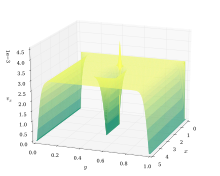
In mathematics, the Wronskian (or Wrońskian) is a determinant introduced by Józef Hoene-Wroński (1812) and named by Thomas Muir (1882, Chapter XVIII). It is used in the study of differential equations, where it can sometimes show linear independence in a set of solutions.
== Definition ==
The Wronskian of two differentiable functions f and g is W(f, g) = f g′ – g f ′.
More generally, for n real- or complex-valued functions f1, . . . , fn, which are n – 1 times differentiable on an interval I, the Wronskian W(f1, . . . , fn) as a function on I is defined by
W
(...